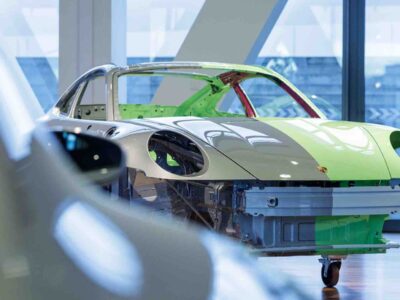As California continues to switch to renewable energy and electric vehicles (EVs), questions remain about freight transportation, especially railroads and locomotives. However, several initiatives are underway to get West Coast-based freight liners to a sustainable standard. Recently, Sierra Northern Railway (SERA) announced it would be switching from diesel-powered trains, with plans to develop a clean hydrogen-powered locomotive.
In March 2021, the California Energy Commission (CEC) awarded SERA a $4 million fund to design and implement clean hydrogen locomotives. The goal was to reduce the emission rate of trains by replacing diesel with clean hydrogen fuel cells.
In September 2022, the early design concepts for the Zero Emission switching locomotive were drawn up. They will test the potential of hydrogen fuel-cell locomotives and whether they will be a sustainable, viable alternative to diesel.
“We are pleased to partner with this great team to build and test this innovative zero-emission switching locomotive. We believe this project will help lead the switching locomotive industry to an emissions-free pathway in all ports in the state of California,” said Kennan H. Beard III, SERA president, in a company press release. As of Sept. 8, 2022, SERA is still in the development phase.
The new train will have to come equipped with hydrogen storage, advanced hydrogen fuel cells and batteries, and system control technologies to regulate energy consumption. The hope is that the hydrogen-powered locomotive will not reduce greenhouse gas emissions, cut down noise pollution and odor, and improve air quality. Sierra Northern is not the only rail service researching alternative fuel sources for locomotives.
The switch to cleaner options is happening across multiple American railways. Union Pacific recently announced the freight liner would be experimenting with biodiesel for its EMD locomotives.
Working with Progress Rail, the manufacturer of Union Pacific’s biodiesel trains, the company wants to use a 20% biodiesel blend, a substantial increase from the original 5%.
This move is part of Union Pacific’s broader goal of reducing emissions by 26% by 2030. It was not a snap decision to switch to biodiesel. Strategic testing and research were conducted to see if biodiesel could keep up with regular diesel performance. Results were promising, thus putting the measure in place.
Updating California’s rail transportation is essential for the state’s goal of reaching carbon neutrality by 2045. Research has shown freight hauling by train reduces greenhouse gas emissions by 75% compared to trucking. It also cuts down on highway congestion. Perhaps more importantly, hydrogen energy is the cleanest and will be the cheapest fuel source once solar and wind energy are more actively involved in energy generation.
Many transportation conglomerates back this claim, especially as electric cars are becoming more popular. With plans for EV-only sales in the Golden State by 2035, the need to transition to clean energy grows stronger.
As West Coast freight trains move off diesel and onto hydrogen fuel, we can expect more sustainable dominoes in the transportation maze to fall in line. Electric cars are making great strides, and industrial transportation will likely continue down the clean energy tracks set by SERA and Union Pacific.





